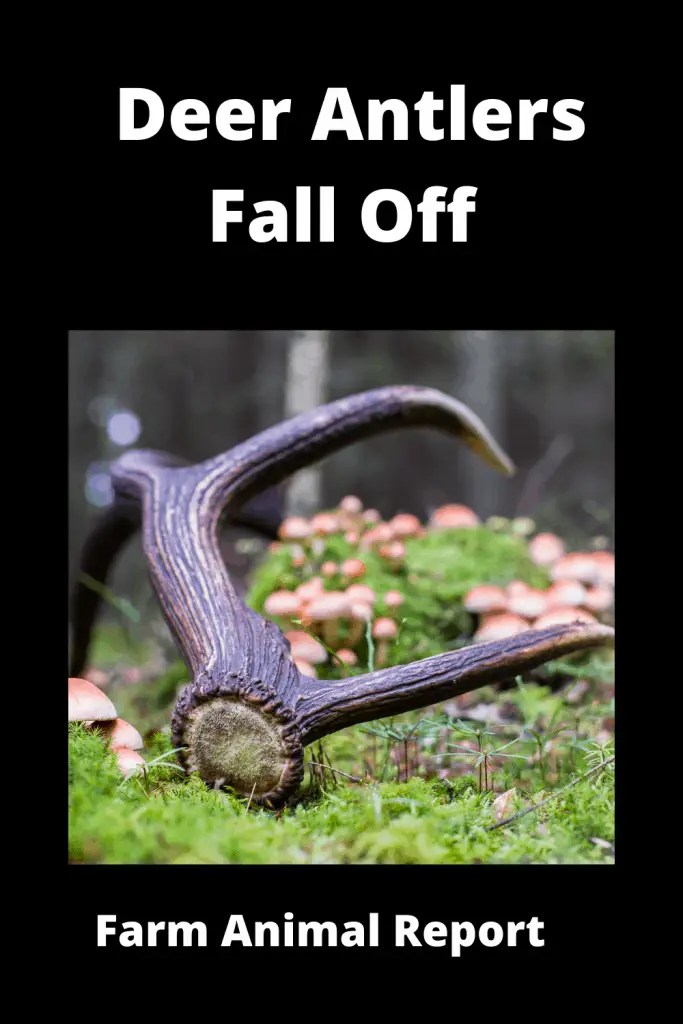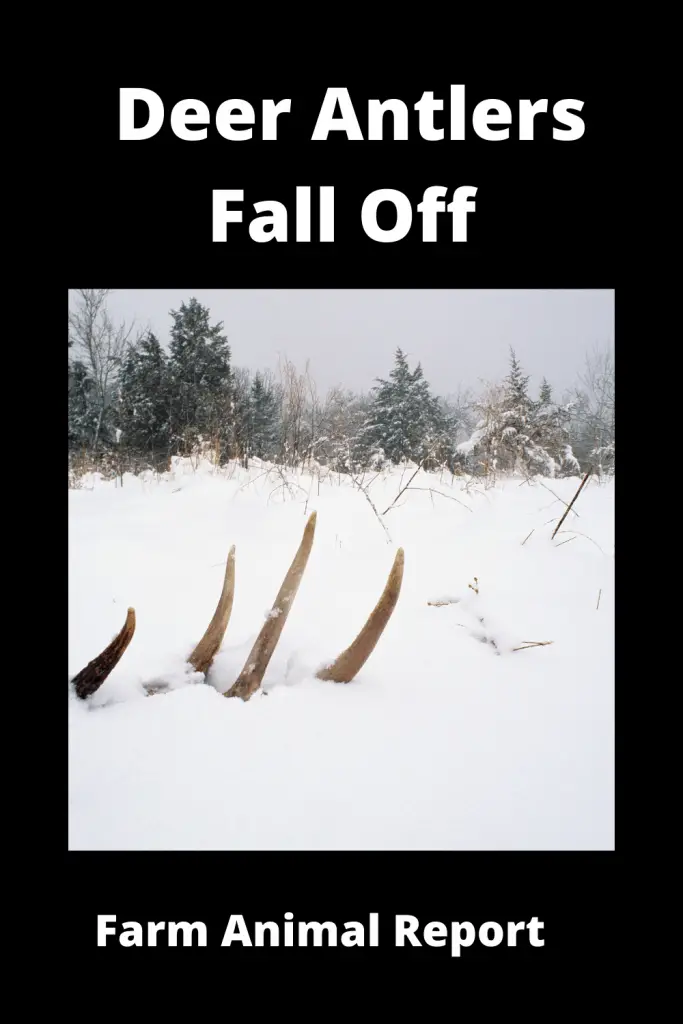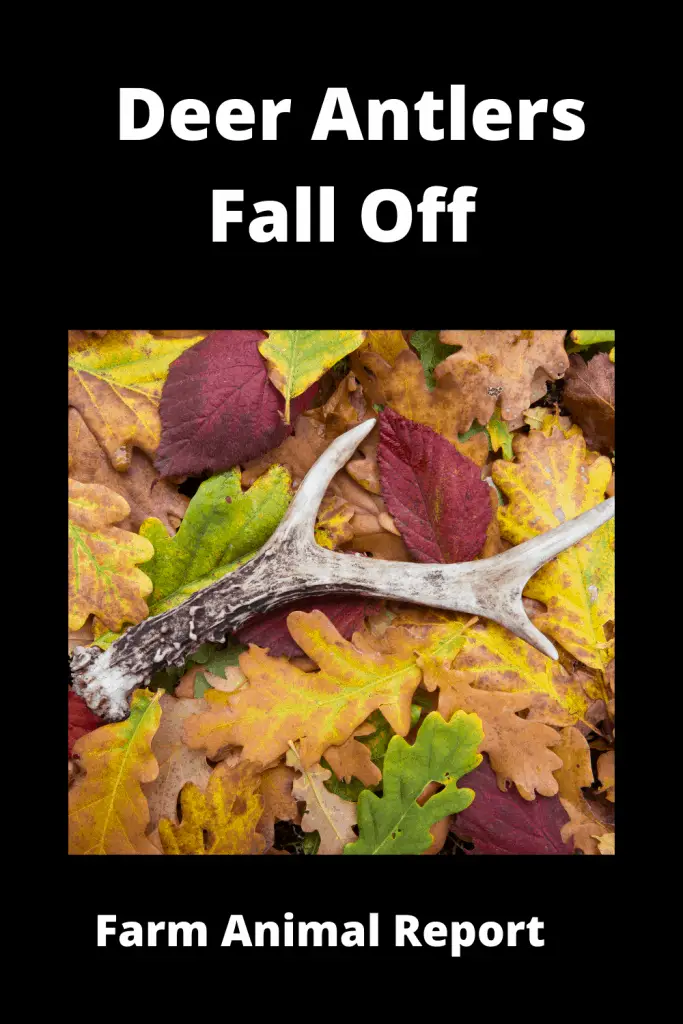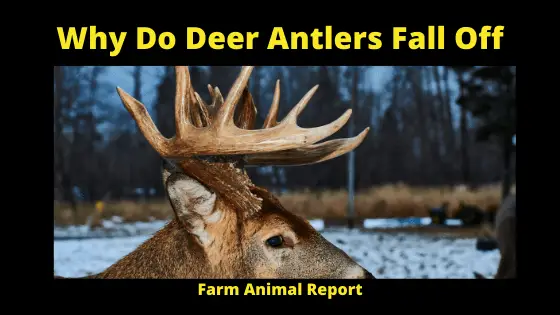Why Do Deer Antlers Fall Off? Deer grow and shed their antlers each year. Antlers serve a vital purpose in deer reproduction. Antlers also provide many details about a deer’s health and age. The condition of the antlers can also affect when a deer antler sheds.
Why Do Deer Antlers Falling Off / Deer Antler Development
Antlers are bone tissue structures that grow from two base points, called pedicles, on top of a deer’s head. As the antler grows, a soft tissue, known as velvet, containing veins and arteries covers the antlers and feeds nutrients to the growing bone structure. Why Do Deer Antlers Falling Off

The size and the number of points or tines on a deer’s antlers depend upon his health, genetics, age, and how well he ate during the winter. Antlers do not always grow the same size each year due to fluctuations in a deer’s food supply and health. Older males can grow six or more points. Deer antlers differ from cattle horns because deer antlers fall off once a year, while cattle horn grows year-round.
Purpose of Antlers
The main purpose of antlers is to attract female deer for mating. During mating season, when the antlers are growing, the male deer displays his antlers to a female deer and uses them to become the dominant male.
See Our Extensive Article – 7 Ways Deer Farmers Make Money
The males will spar with each other using their antlers to establish dominance and claim females. Antlers are also useful for defense against other deer and predators. When fighting other deer, deer hit each other with their antlers and often lock their antlers together. The deer sometimes are unable to unlock their antlers and end up starving to death.
Why Do Deer Shed Their Antlers?
Deer (and other ungulates, like elk) shed their antlers every year, then grow a completely new set. This shedding procedure takes two to three weeks to complete, while the regeneration takes an entire summer to complete before the cycle starts all over again.
Check Out Amazons Educational Books on Whitetail Deer
Bucks shed their antlers between January and April, depending upon many factors including the animal’s age and the latitude at which it lives after the mating season concludes. Antlers are made up of honeycombed bone-like tissue. The mounting points on the heads of deer from which the antlers grow are called pedicles. The antlers break off (are shed) from these pedicles. Pedicles appear on a young deer’s forehead during his first year.
The next year, he will develop small shafts, and by year three the first “branch” will appear. As the deer matures, the antlers will lengthen and thicken and often develop additional branches. While in the growth phase, the antlers are covered in a soft membrane referred to as “velvet,” a layer of skin that supplies the growing antlers with the nutrients needed to build the bone mass.
This velvet contains many substances such as amino acids, minerals, proteins, and Growth Factor-1 (a protein hormone similar in molecular structure to insulin). The antlers will grow rapidly for two to four months. During the summer, higher levels of the male hormone testosterone slow antler growth, and the veins and arteries around the velvet constrict and cut off the blood and nutrient supply to the antlers.

The velvet then withers and begins to fall off, a process facilitated by the deer by rubbing his antlers against trees. The whole process is repeated every year for the rest of his life. As for the reason, antlers are shed, it’s due to a drop in testosterone following the rut.
When a buck’s testosterone levels fall, it causes a weakening in the tissue and bone at the antler base (pedicle) to the point where the antlers simply fall off. This process can happen quickly; antlers that are firmly attached one day can weaken and fall off within 24 to 48 hours. A buck in peak physical health will shed his antlers later than a weaker buck, and injured deer often shed their antlers early.
Deer Antler Maturity and Deterioration
During the summer, higher levels of the male hormone testosterone slow antler growth and the veins and arteries around the velvet constrict and cut off the blood supply to the antlers. By early September, the velvet dries and sheds, revealing the mature antler’s bony structure for the autumn mating season. Over time, antlers get damaged from fighting and general wear from daily life. By the end of the mating season, some antler points may be significantly blunted or broken off.
Deer Antler Shedding
After deer mating season, deer shed antlers in early December through March. The amount of time that a deer retains his antlers depends upon his nutrition and genetics. Antler shedding occurs over a 2- to 3-week period. The shedding process does not cause any discomfort to the deer. The tissue beneath the antler and the pedicles gradually disintegrate, causing the antlers to loosen. The antlers eventually fall off. New antlers will grow in the spring to prepare for a new mating season.
How Deer Shed Antlers
Deer antlers are made up of a honeycomb, bone-like tissue. The mounting point where the antlers attach to the head is called the pedicle, where they break off.
During the summer, the young buck’s antlers grow fast, for about two to four months. High levels of testosterone slow the growing speed and the veins and arteries around the velvet cut blood flow and nutrition supply to the antlers. The velvet encasing the antlers withers and falls off with the help of deer rubbing their antlers on trees.

After their antlers are fully grown again, a drop in testosterone levels causes weakness at the pedicle. The pedicle becomes so weak the antler growth stops and the antlers simply fall off.
Contributing Factors Antler Loss
Some deer shed their antlers earlier or later than normal depending on different factors. Wounded or injured deer usually cast their antlers earlier than normal because injuries activate the osteoclasts cells early. The same situation goes for deer with declining physical conditions.
Deer that are in good condition, live in a mild climate and have a high-quality habitat that will keep their antlers well into the spring months. Deer with poorer conditions, live through harsh winters, and have limited nutrition based on their habitat will shed their antlers earlier.
Sometimes a late-season hunt can result in a trophy with no antlers because antlers have already been shed. So, before you pull the trigger, look for any red, raw, or scabbed-over areas on either side of the forehead to determine if you’re shooting a buck that has already shed his antlers.
Deer / Cervid Farming / Profitability Table
| Deer Type | Ave Weight | Average Calves/Yr | Gestation | Meat Retail Price/lb |
|---|---|---|---|---|
| White Tailed | 150 | 2 | 201 | $ 38.95 |
| Mule | 120 - 320 | 2 | 203 | $ 7 - 9.50 |
| Elk | 71- - 730 | 1 | 240 - 262 | $ 44.95 |
| Reindeer | 350 - 400 | 1 | 222 | $ 74.95 |
| Moose | 840 - 1500 | 1 | 243 | $ 7.50 |
| Sika | 93 | 1 | 224 | 34.95 |
| Red | 440 | 1 | 236 | $ 35.95 |
| Pere David's | 370 | 1 | 286 | |
| Axis | 79 | 2 | 227 | $ 29.99 |
| Mutjah | 30 | 1 | 214 | $ 39.95 |
Types of Deer for Deer Farming
| Breed of Deer | Weight | Price of Venison | ||
|---|---|---|---|---|
| Whitetail | Buck - 150 lb Doe - 100 lbs | $ 29.50 | ||
| Mule | Buck - 150 - 300 lbs Does - 95 - 200 lbs | $ 44.95 | ||
| Red | Buck 350 - 530 lbs Doe 260 - 370 lbs | $ 21.95 | ||
| Fallow | Buck - 130 - 200 lbs Does - 60 - 90lbs | $ 39.95 | ||
| Axis | Bucks 150 - 250 lbs Does 90 - 150 lbs | $ 43.95 | ||
| Reindeer | Buck 350 - 400 lbs Does - 180 - 260 lbs | $ 74.95 |


